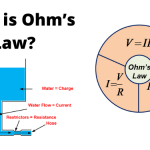Researchers have developed a method for predicting how changes to manufacturing processes and materials will impact battery life.

University of Michigan engineers have identified internal resistance, measured immediately after cells are made, as a key indicator of how long a battery will last. The measurements can be done in seconds towards the end of the manufacturing process at little to no additional cost.
Lifespan prediction is already possible, but it requires repeated cycling-charging, discharging and recharging to gather data needed to train an algorithm. Similarly, ageing tests can take weeks to months to complete and are restricted to a handful of cells per batch of batteries produced.
The new study published in Joule shows that accurate battery lifetimes can be predicted with the help of one resistance measurement. That resistance can come from the materials used for internal components, or electrochemical factors that affect how well ions move between the battery electrodes. According to U-M, measuring resistance at low levels of charge is key.
“The resistance measurement, at low state of charge, can, in principle, be obtained without any cycling, making the model training process much faster,” said Andrew Weng, a doctoral student in mechanical engineering and the study’s lead author.
Resistance can give an indication of how much lithium merged with the liquid electrolyte that ferries ions from one electrode to the other inside the battery. That combination layer – the solid electrolyte interphase – can protect the surface of the electrode and enable longer lifetimes.
The amount of lithium that goes into the solid electrolyte interphase is usually difficult to measure, but at a low state of charge the battery’s internal resistance is closely related to how much lithium went into the solid electrolyte interphase. This provides a rapid measure of that protective layer, plus the operating capacity of the battery, with ordinary equipment.
“Carmakers are always trying to decrease the cost of producing cars, and right now, they’re looking to make EV batteries as cost-effective as possible,” said Anna Stefanopoulou, the William Clay Ford Professor of Technology and leader of the research team. “So the question we’ve tried to answer is ‘How fast can you learn about battery lifetime during the manufacturing process itself?’
“It turns out that the answer is, ‘Immediately, if you know the critical signal that can be acquired in a high-throughput testing.’ Finding such key measurable features can be simply used for continuous improvements and scaling up domestic battery manufacturing.”


